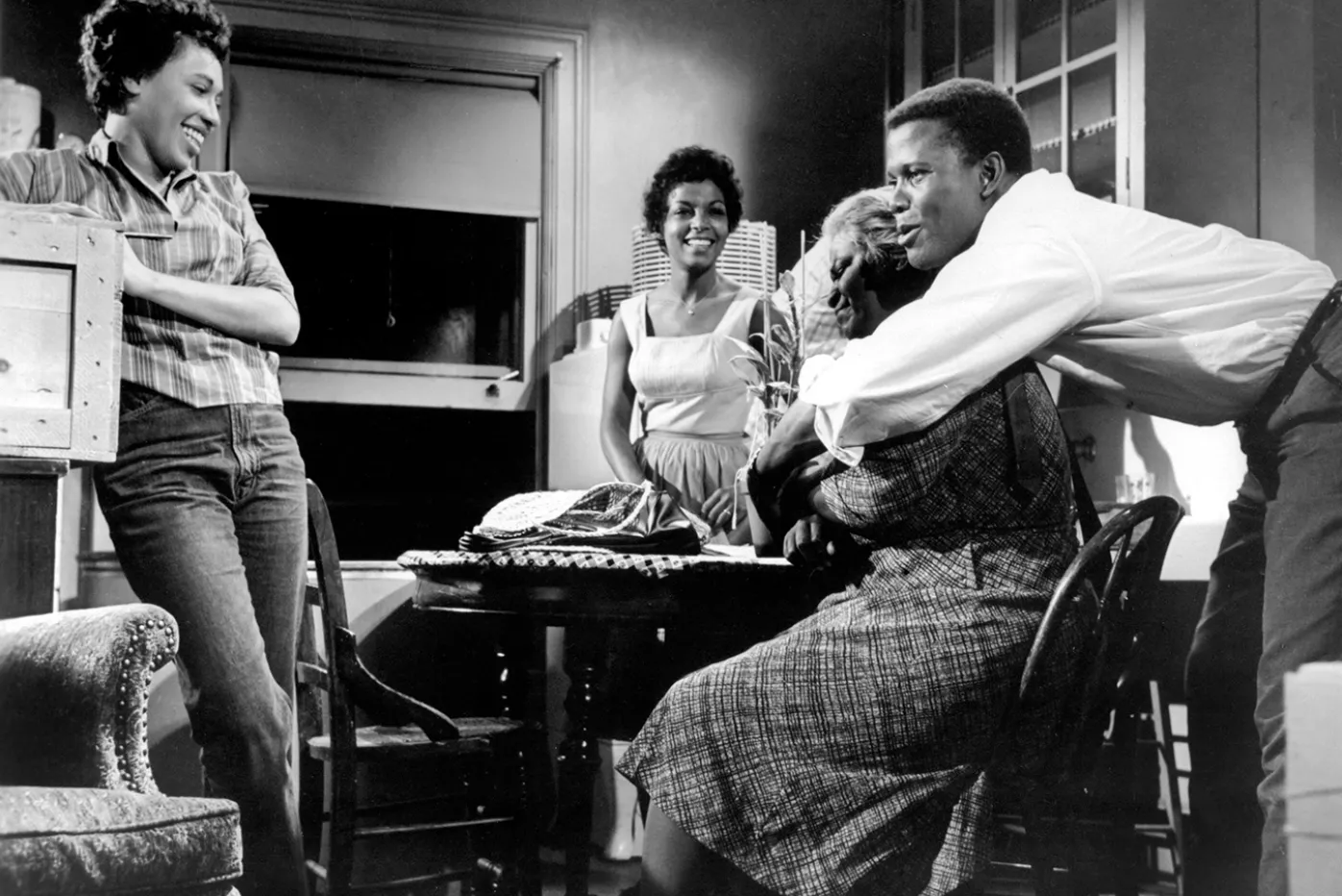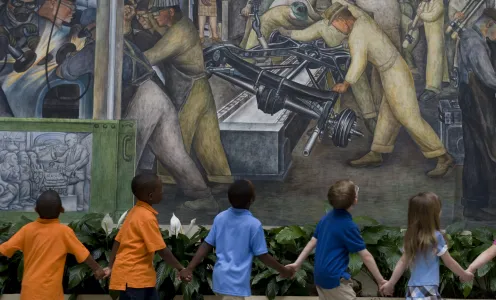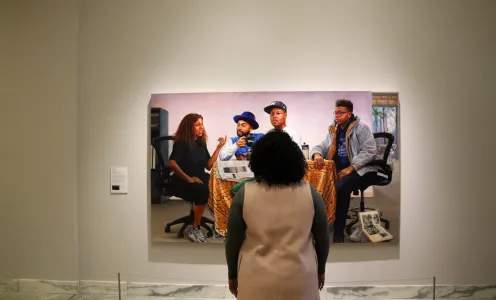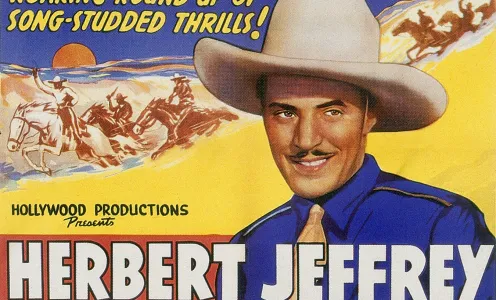From astonishing home movies to splashy Hollywood musicals to heartbreaking drama: you’ll want to see every one of these pioneering films at the DFT this spring!
The Detroit Institute of Arts is bringing an incredible roster of films to the Detroit Film Theatre this year to complement Regeneration: Black Cinema 1898 – 1971. Here, Elliot Wilhelm, the DIA’s Curator, Film Programs and indefatigable movie enthusiast, highlights five favorites (find schedules for all of them and more here) that will leave you amazed, entertained, and moved.
Ten Minutes to Live, Friday, March 29, 7 p.m.
- Directed by Oscar Micheaux
“Oscar Micheaux was a genius and pioneer in every aspect of movies. Ten Minutes to Live is an amazing hour-long murder-suspense film based on two short stories he wrote. He assembled those stories into a feature, set in New York, about a person who receives a note that says, ‘you have ten minutes to live, and when you read this note, that's how much time you're going to have left.’ The film is divided exactly in half, with the same actions told from different points of view.
“This is pretty radical for 1932, and very ambitious. Micheaux faced the same problems that Hollywood studios faced in 1927, when there was a sudden demand for sound movies, but cameras make a lot of noise, and actors had to speak directly into microphones. In Ten Minutes to Live you see Micheaux wrestle with this new form of filmmaking. The scenes in which two people are sitting in a nightclub talking are stilted, but as always, he found brilliant workarounds; he made one of the characters deaf, so from that character’s point of view sound wasn’t significant. And he staged scenes in a nightclub between the different acts of the story, so you have great musical numbers going on where dialogue isn’t needed. Some of the dance numbers are insanely provocative.
“He also wanted to take the camera outside. There’s a wonderful scene where characters are taking a taxi ride up Eighth Avenue in New York City, and you see well-dressed people going in and out of the newly built New Yorker Hotel, near the Empire State Building, which was only a few years old at the time. He blended that into the story — I wouldn’t say seamlessly, but skillfully. He assembled this melding of two stories and made it visually and physically exciting simply through his imaginative film sense, as if to say, ‘I don't care about the restrictions of the medium. I'm going to find a way around it.’ Because of his independence, he was able to create what now looks and feels like an experimental film.”
Films of the Reverend Solomon Sir Jones, Sunday, April 14, 2 p.m.
“This is probably the most important film in many ways, and the least typical. It's a compilation of films made by one man, the Reverend Solomon Sir Jones, who between 1924 and 1928 enjoyed beyond measure the 16-millimeter movie camera he bought to make home movies. There are other home movies in the Regeneration exhibition — Cab Calloway’s, the Nicholas Brothers’, Josephine Baker's — but Jones was filming primarily in Oklahoma. He shot hundreds of hours of footage of African American communities in and around his hometown, and ultimately throughout the state. We see people doing everyday ordinary jobs in and near their homes, and in the businesses they either own or work in. You see schools, dance classes, grocery stores, restaurants, banks. It’s a portrait of real everyday life that is breathtaking in its simplicity, its beauty, and its relatability. To watch a compilation of an hour or so of his films is hypnotic. This is the life we don't see on the front pages, ordinary everyday life. I can't tell you how moving it is. We are so privileged to show a big selection of these films.”
Carmen Jones, Sunday, April 28, 2 p.m.
- Directed by Otto Preminger
“The main astonishment about Carmen Jones is Dorothy Dandridge, who played the lead in the film. You can't find a more exciting cast; her costar was Harry Belafonte. And yet, what did 20th Century Fox do? They took Dorothy Dandridge’s voice and Harry Belafonte's voice out of the picture and had them dubbed by other people. Dorothy Dandridge becomes the first Black woman to be nominated for an Oscar for Best Actress for this film. I'm convinced one of the reasons she didn't win was not just racism, but because they didn't use her voice in the picture. It's even more shocking for folks now to realize that Harry Belafonte's voice wasn't used either. But the film itself is still really worth seeing.”
A Raisin in the Sun, Sunday, May 5, 2 p.m.
- Directed by Daniel Petrie, 1961
“A Raisin in the Sun had been a hit Broadway show, and the film uses the same cast: the young Sidney Poitier, Ruby Dee, a very young, almost unrecognizable Louis Gossett. And of course, you had Claudia McNeil as Mama, the family matriarch. This was the first film with an all-Black cast that white people could relate to on a personal and emotional level. You have an American family that is just scraping by and a dad, played by Poitier, who wants to be a person of means. Mama gets a big insurance payout and decides to buy a nice house in a white neighborhood. And in comes the guy from the white homeowners’ association saying, ‘Hi folks, don’t we all love to live in happiness with our own kind?’ So the family, which had been squabbling and fighting as most families do, comes together around this common enemy.
“A Raisin in the Sun is a really powerful piece of writing. One of the reasons the film still works so well is that the director, Daniel Patrick, didn't have enough money to shoot on location, so it takes place in a series of small, claustrophobic rooms. It feels like you're seeing great theater. If a filmed play is done properly, it's more exciting than being in the front row of a theater or seeing a big spectacular visual experience on screen. This film is the best of both worlds. It didn't get a great release, and it didn’t make a ton of money, but it stuck around and kept getting re-released, which is how I saw it as a kid.
“And now looking at it, it seems really ahead of its time, powerful and absolutely wonderful, and one of the major steps in this history of Black people’s involvement in American film. Anybody who would dare say that Sidney Poitier was just a glamorous star and not a great actor should look at him in this, his power and excitement, the way his eyes light up when he realizes things that he never thought of for the first time. It's not schmaltzy, it’s real and potent.”
Cabin in the Sky, Sunday, May 12, 2 p.m.
- Directed by Vincente Minelli
“In 1943, MGM tried out a brand-new director, an up-and-coming person named Vincente Minnelli. For his first feature film, he was given Cabin in the Sky to direct, which is a cliché story about a guy, played by Eddie Rochester Anderson, who's in trouble. He's between life and death, he's got a Good Angel and a Bad Angel, and he has to decide whether he wants to live a straight-and-narrow life with his wife or go on with the drinking and the gambling and the lying. Yes, there's a moral choice that has to be made by the end, but the movie is really about the joy of the musical numbers.
“Minelli was telling a story about a genuinely American culture and making it as lyrical and joyous as he possibly could with the budget constraints that he had. It wasn’t a micro-budgeted picture, but it also wasn’t one of the top-of-the-line glossy MGM musicals that would come out later in the decade. But it was a hit, and I can say that because I remember my mom talking about it years later, and saying how wonderful it was.”
Stormy Weather (coming in June)
- Directed by Andrew L. Stone, 1943
"During World War II, major studios started including a few more Black actors in larger roles in a modest number of releases. This was partly because many studios’ regular contract performers were either enlisted in or fundraising for the military, but also because studio heads like Darryl F. Zanuck and Louis B. Mayer became aware of the studios' importance as propaganda factories — committed to sending audiences here and abroad a message of this is the country that isn’t fascist, where everyone has an equal chance.’ This, of course, even though the U.S. military itself wasn’t legally desegregated until well after the war.
"The studios realized they were able to get major talent who had not been in movies — except maybe in tiny roles — and make happy musicals that had great dance numbers and a moral message. But the important thing isn’t just that Stormy Weather gives actors like Lena Horne, Cab Calloway, Bill Robinson, and the Nicholas Brothers roles, it’s that the film was shown in nonsegregated theaters. For the first time, white audiences were seeing Louis Armstrong in a semi-dramatic role. They’re seeing Lena Horne sing the title song Stormy Weather and the Nicholas Brothers doing what is maybe the greatest dance scene ever put on film — which, by the way, was done in one take.”



